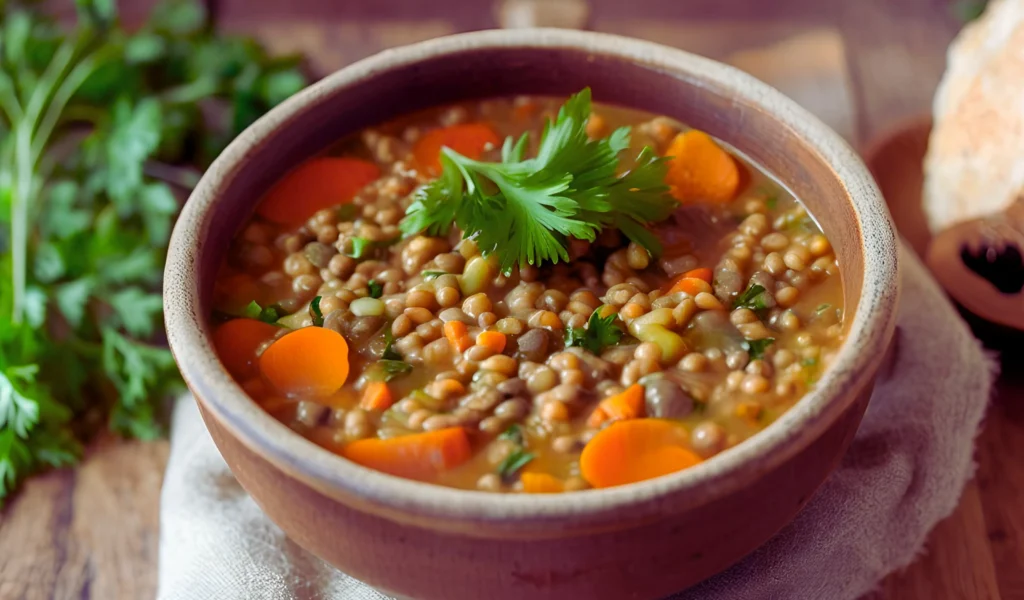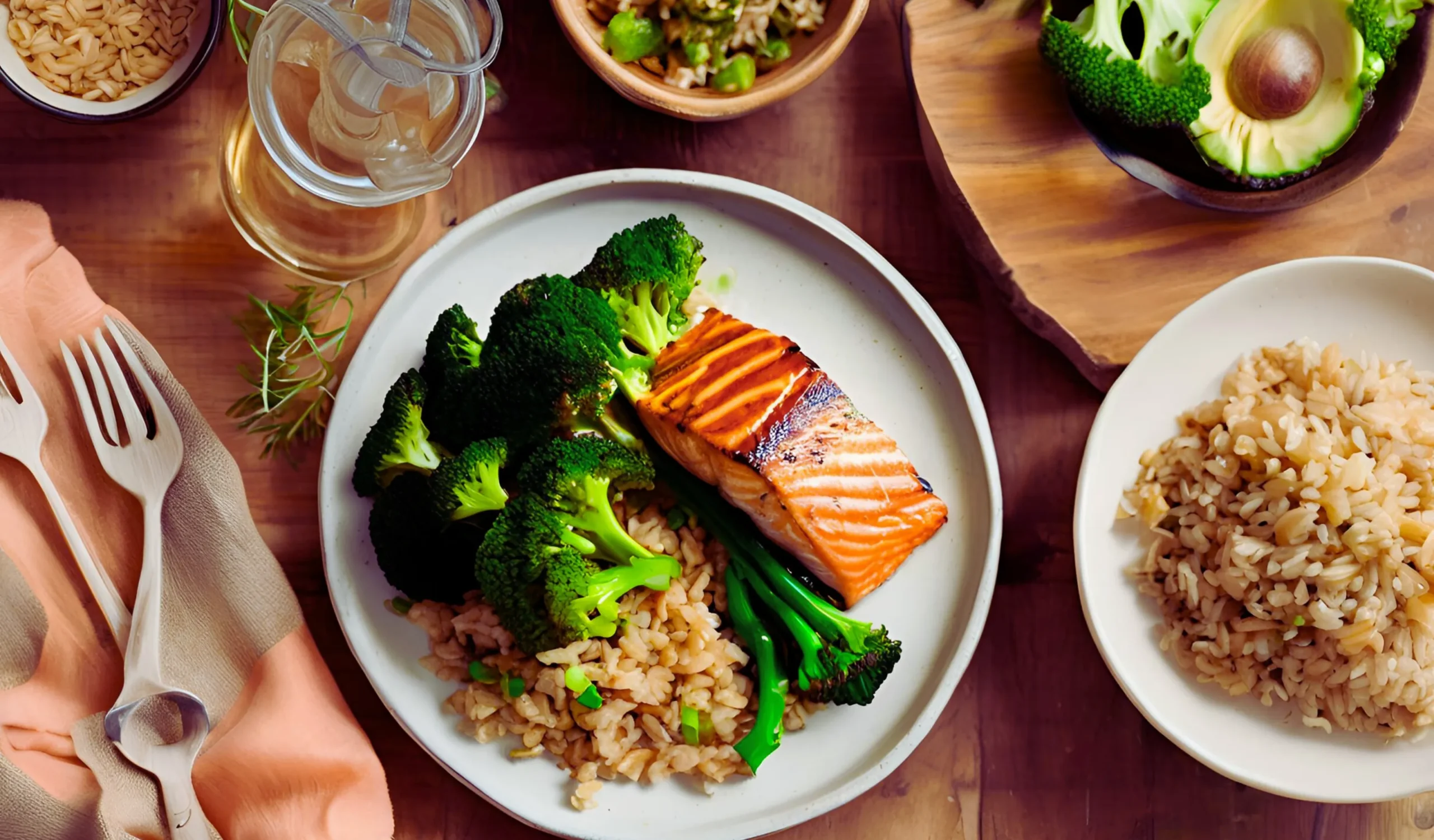Introduction
Managing gestational diabetes can feel overwhelming, especially when it comes to preparing meals that are not only nourishing but also blood-sugar-friendly. However, with thoughtful planning and delicious recipes, it’s entirely possible to create a diet that supports both mom and baby. This article is a comprehensive guide packed with expert tips, meal planning strategies, and easy-to-make recipes designed specifically for those managing gestational diabetes. Let’s dive into a healthier, tastier way to approach pregnancy nutrition!
Part 1: Understanding Gestational Diabetes Recipes
Definition and Overview
Gestational diabetes is a type of diabetes diagnosed during pregnancy, typically between the 24th and 28th weeks. It occurs when hormonal changes interfere with the body’s ability to use insulin effectively, causing blood sugar levels to rise. While it often resolves after delivery, managing it during pregnancy is crucial to ensure the health of both the mother and baby.
Prevalence and Risk Factors
This condition affects approximately 2–10% of pregnancies in the United States. Factors such as being overweight, having a family history of diabetes, or being over the age of 25 can increase the likelihood of developing gestational diabetes. Additionally, certain ethnic groups are at higher risk, including African American, Hispanic, and Asian populations. Incorporating Gestational Diabetes Recipes into daily meals is a practical and effective way to manage this condition and support a healthy pregnancy.
Importance of Diet in Management
Diet plays a pivotal role in controlling blood sugar levels. Incorporating Gestational Diabetes Recipes featuring low-glycemic index foods, lean proteins, and high-fiber options helps stabilize blood sugar and provides sustained energy throughout the day. For expectant mothers, understanding which foods to include—and avoid—is essential for effective management and a healthy pregnancy.
Foods to Avoid and Include
- Foods to Avoid: Refined sugars, processed snacks, and sugary beverages. These can cause rapid blood sugar spikes, which are harmful for both mom and baby.
- Foods to Include: Whole grains, fresh vegetables, lean proteins, and healthy fats such as avocado and olive oil are excellent choices.
By grasping the basics of gestational diabetes and its dietary requirements, including the incorporation of Gestational Diabetes Recipes, you’ll be better prepared to tackle the challenges head-on. And don’t worry—there’s more to explore, from tasty meal ideas to practical tips that will help you stay on track and enjoy a healthy pregnancy!
Part 2: Meal Planning and Gestational Diabetes Recipes
Meal Planning Strategies
Importance of Regular Meal Timing
Maintaining consistent meal timing is essential for stabilizing blood sugar levels when managing gestational diabetes. Eating every three to four hours helps prevent dramatic fluctuations in glucose levels. Balanced meals and snacks can provide a steady source of energy throughout the day while reducing the risk of sugar spikes or drops.
Portion Control and Plate Method
Portion control is a game-changer in managing gestational diabetes. Incorporating Gestational Diabetes Recipes into your meal plan can make portioning easier. The plate method is an effective visual guide: half your plate should be non-starchy vegetables like spinach or broccoli, one-quarter should consist of lean protein like grilled chicken, and the last quarter can include a complex carbohydrate such as quinoa or brown rice. This balanced approach keeps meals satisfying, nutrient-rich, and blood-sugar-friendly.
Sample Meal Plan Overview
A well-designed meal plan ensures variety and essential nutrients. Here’s a quick glimpse of a day’s meals:
- Breakfast: High-protein vegetable omelet with whole-grain toast
- Lunch: Grilled chicken and quinoa salad
- Dinner: Baked salmon with steamed broccoli and brown rice
- Snacks: Apple slices with peanut butter or Greek yogurt with flaxseeds
Breakfast Recipes

High-Protein Vegetable Omelet
- Ingredients: Eggs, spinach, bell peppers, onions, feta cheese, olive oil
- Instructions: Whisk eggs in a bowl. Sauté vegetables in olive oil until tender. Add eggs and cook on medium heat until set. Sprinkle with feta before folding.
Greek Yogurt with Berries and Nuts
- Ingredients: Unsweetened Greek yogurt, fresh berries, walnuts or almonds, chia seeds
- Instructions: Layer Greek yogurt in a bowl. Add berries and sprinkle nuts and chia seeds on top. Chill before serving for extra creaminess.
Chia Seed Pudding with Almond Milk
- Ingredients: Almond milk, chia seeds, vanilla extract, stevia or a sugar substitute
- Instructions: Combine ingredients in a jar. Stir well and refrigerate overnight. Stir again before serving and garnish with fresh fruit if desired.
Lunch Recipes

Grilled Chicken and Quinoa Salad
- Ingredients: Grilled chicken, cooked quinoa, mixed greens, cherry tomatoes, cucumber, olive oil, lemon juice
- Instructions: Toss mixed greens, quinoa, and vegetables. Top with grilled chicken. Drizzle olive oil and lemon juice for dressing.
Lentil and Vegetable Soup
- Ingredients: Lentils, carrots, celery, onions, garlic, vegetable broth, spices (cumin, paprika)
- Instructions: Sauté onions and garlic. Add carrots and celery. Stir in lentils and broth. Season with spices and simmer until lentils are tender.
Turkey and Avocado Whole Grain Wrap
- Ingredients: Whole-grain tortilla, sliced turkey, avocado, spinach, mustard
- Instructions: Spread mustard on the tortilla. Layer spinach, turkey, and avocado. Roll tightly and slice in half.
Dinner Recipes

Baked Salmon with Steamed Broccoli and Brown Rice
- Ingredients: Salmon fillet, broccoli, brown rice, olive oil, garlic, lemon
- Instructions: Bake salmon with olive oil, garlic, and lemon at 375°F for 20 minutes. Steam broccoli and cook brown rice. Serve together.
Stir-Fried Tofu with Mixed Vegetables
- Ingredients: Firm tofu, bell peppers, zucchini, snap peas, soy sauce, ginger, sesame oil
- Instructions: Stir-fry tofu in sesame oil until golden. Add vegetables and soy sauce. Cook until vegetables are tender-crisp.
Lean Beef and Vegetable Stir-Fry
- Ingredients: Lean beef strips, broccoli, carrots, snap peas, soy sauce, garlic, ginger
- Instructions: Sauté beef until browned. Add vegetables and garlic-ginger mix. Stir-fry until beef is cooked and veggies are tender.
Snack Options

Apple Slices with Peanut Butter
- Ingredients: Sliced apple, natural peanut butter
- Instructions: Slice an apple and serve with a small portion of peanut butter for dipping.
Carrot Sticks with Hummus
- Ingredients: Fresh carrot sticks, hummus
- Instructions: Cut carrots into sticks and pair with hummus for a crunchy and satisfying snack.
Greek Yogurt with Flaxseeds
- Ingredients: Unsweetened Greek yogurt, ground flaxseeds
- Instructions: Mix flaxseeds into yogurt and enjoy a protein-packed, omega-3-rich treat.
Part 4: Additional Considerations for Gestational Diabetes Recipes
Tips for Dining Out with Gestational Diabetes Recipes
Making Informed Choices
Dining out with gestational diabetes doesn’t have to be daunting! Opt for grilled, baked, or steamed options over fried or breaded dishes. Request sauces and dressings on the side to control portions. Whole grains, lean proteins, and non-starchy vegetables are your best friends. For instance, a grilled chicken salad with olive oil dressing is a healthier alternative to creamy pasta dishes.
Communicating Dietary Needs
Never hesitate to communicate your dietary restrictions when ordering. Most restaurants are accommodating and can modify dishes to suit your needs. You might say, “Can I have a smaller portion of rice and extra vegetables instead?” or ask if sugar is added to sauces. Planning ahead by reviewing menus online can also help you make informed decisions.
Physical Activity and Its Role
Benefits of Exercise
Regular exercise is a cornerstone of managing gestational diabetes. Physical activity helps lower blood sugar levels, improves insulin sensitivity, and enhances overall well-being. Additionally, it reduces pregnancy-related discomforts like back pain and improves mood and energy levels.
Safe Exercise Options During Pregnancy
Staying active while pregnant doesn’t mean overexertion. Low-impact activities like walking, swimming, or prenatal yoga are safe and effective. Always consult your healthcare provider before starting an exercise regimen, ensuring it’s appropriate for your specific health needs. Aim for at least 30 minutes of moderate activity most days of the week.
Monitoring Blood Sugar Levels
Importance of Regular Monitoring
Tracking blood sugar levels regularly is critical for identifying trends and ensuring they remain within a safe range. Using a glucose monitor as recommended by your healthcare provider helps you adjust meals, exercise, and medication if needed.
Understanding Blood Sugar Readings
Understanding your glucose readings empowers you to make informed dietary and lifestyle decisions. Target blood sugar levels for gestational diabetes typically fall within these ranges:
- Fasting: Below 95 mg/dL
- 1 hour after meals: Below 140 mg/dL
- 2 hours after meals: Below 120 mg/dL
Keep a log of your readings and share them with your doctor during check-ups to ensure your management plan is working effectively.
Part 5: Frequently Asked Questions (FAQs)
What snacks can I eat with gestational diabetes?
Snacks like apple slices with peanut butter, carrot sticks with hummus, or Greek yogurt with nuts are nutritious, blood-sugar-friendly choices.
Can I eat fruit if I have gestational diabetes?
Yes, but choose low-glycemic fruits such as berries, apples, or pears. Pair them with a source of protein or fat to avoid sugar spikes.
How many carbohydrates should I consume per meal?
Most guidelines recommend 30–45 grams of carbohydrates per meal, depending on your individual needs and glucose tolerance.
Is it safe to exercise during pregnancy with gestational diabetes?
Absolutely! Low-impact exercises like walking or swimming are safe and beneficial. Always consult your doctor before starting a new activity.
Will gestational diabetes affect my baby?
With proper management, the risks are significantly reduced. However, unmanaged gestational diabetes can lead to complications like larger birth weight or preterm delivery.
Does gestational diabetes go away after delivery?
In most cases, gestational diabetes resolves after delivery. However, it increases the risk of developing type 2 diabetes later in life, so regular follow-ups are important.
Part 6: Conclusion
Conclusion
Recap of Key Points
Managing gestational diabetes through a balanced and thoughtful diet is essential for both maternal and fetal health. From understanding the condition to meal planning strategies, we’ve explored how nutrient-rich foods, regular meal timing, and portion control can make a significant difference. Delicious recipes like baked salmon with broccoli and blood-sugar-friendly snacks ensure you don’t have to sacrifice flavor for health. Exercise and regular blood sugar monitoring further complement dietary changes, promoting optimal outcomes.
Encouragement for Healthy Lifestyle Choices
While gestational diabetes might seem overwhelming at first, it’s a manageable condition with the right approach. Embrace this journey as an opportunity to establish lifelong habits that support not just pregnancy health but overall well-being. Choose wholesome foods, stay active, and monitor your progress regularly. By making informed choices, you’re not only protecting your baby but also setting a foundation for a healthier future. Remember, every small step counts!
Latent Semantic Indexing (LSI) and Natural Language Processing (NLP) Keywords
- Gestational diabetes meal ideas
- Pregnancy diabetes recipes
- Blood sugar-friendly meals
- Low glycemic index recipes
- Diabetic-friendly cooking during pregnancy
- Healthy pregnancy meal planning
- Nutrient-rich recipes for gestational diabetes
- Carbohydrate counting in pregnancy
- High-fiber meals for blood sugar control
- Protein-rich recipes for gestational diabetes
- Low-sugar snacks for pregnant women
- Balanced diet for gestational diabetes
- Insulin resistance pregnancy diet
- Managing gestational diabetes through diet
- Prenatal nutrition for diabetes management
This conclusion ties together the practical steps and positive outlook that define a successful approach to managing gestational diabetes.
Expanding on Gestational Diabetes Management and Recipes
Managing gestational diabetes requires a proactive approach, but it’s also an opportunity to embrace a healthier lifestyle. With the right mindset, resources, and a bit of culinary creativity, you can turn what might initially feel like a challenge into a fulfilling journey. Let’s delve deeper into essential strategies, expanded recipe ideas, and additional tips to empower you in managing gestational diabetes.
Why Nutrition Matters: A Deeper Dive
Dietary management of gestational diabetes isn’t just about what you eat but how and when you eat. A thoughtful approach to nutrition can stabilize blood sugar levels, reduce reliance on medication, and promote a healthy pregnancy. By focusing on foods rich in fiber, protein, and healthy fats, you can create meals that are both satisfying and nourishing.
Key Principles of Nutrition for Gestational Diabetes:
- Focus on Low Glycemic Index Foods: These include whole grains, legumes, and non-starchy vegetables. They release glucose slowly, preventing spikes.
- Incorporate Protein with Every Meal: Protein helps slow the absorption of carbohydrates, maintaining stable blood sugar levels.
- Limit Simple Sugars: Avoid processed sugars and choose natural sweeteners sparingly.
More Snack Ideas for Gestational Diabetes
Snacks are a great way to maintain stable blood sugar levels between meals. Here are additional options beyond the classics mentioned earlier:
- Hard-Boiled Eggs with Cherry Tomatoes: High in protein and low in carbs, this snack is perfect for on-the-go.
- Avocado Slices with Lemon: A creamy, satisfying option that provides healthy fats and fiber.
- Cottage Cheese with Cucumber Slices: A low-carb snack that’s refreshing and rich in calcium.
- Handful of Almonds or Walnuts: These nuts are packed with good fats and provide a steady source of energy.
- Rice Cakes with Almond Butter: Choose whole-grain rice cakes for added fiber and top with a thin layer of almond butter.
Expanded Breakfast Recipe: Spinach and Mushroom Egg Muffins
Ingredients:
- 6 large eggs
- 1 cup fresh spinach, chopped
- 1/2 cup mushrooms, diced
- 1/4 cup shredded cheese (optional)
- 1/4 teaspoon garlic powder
- Salt and pepper to taste
Instructions:
- Preheat your oven to 375°F (190°C).
- Lightly grease a muffin tin with olive oil or use muffin liners.
- In a mixing bowl, whisk eggs until combined. Add garlic powder, salt, and pepper.
- Stir in chopped spinach, mushrooms, and shredded cheese (if using).
- Pour the mixture evenly into the muffin tin cups.
- Bake for 20–25 minutes, or until the muffins are set and slightly golden on top.
- Cool for a few minutes before serving.
These egg muffins can be made ahead of time and reheated for a quick, protein-packed breakfast.
Managing Blood Sugar with Physical Activity
While diet is paramount, pairing it with regular physical activity can enhance your ability to manage gestational diabetes. Exercise promotes better insulin sensitivity and helps regulate glucose levels.
Easy Exercises to Incorporate:
- Walking: A brisk 30-minute walk after meals can aid digestion and improve glucose control.
- Swimming: Gentle on the joints, swimming is a full-body workout that’s safe during pregnancy.
- Prenatal Yoga: This combines stretching, relaxation, and strength-building, offering both physical and emotional benefits.
Be mindful of any discomfort and consult your healthcare provider before beginning or modifying your exercise routine.
More Dinner Ideas: Flavorful and Balanced
Dinner can be a delightful way to end the day. Here are some additional ideas:
1. Herb-Crusted Chicken with Zucchini Noodles
- Season chicken breasts with dried herbs like thyme, rosemary, and oregano. Bake until cooked through. Serve with spiralized zucchini sautéed in olive oil and garlic.
2. Turkey Meatballs with Cauliflower Rice
- Make lean turkey meatballs seasoned with parsley and garlic. Serve over steamed cauliflower rice with a tomato-based marinara sauce.
3. Shrimp Stir-Fry with Brown Rice
- Sauté shrimp with ginger, garlic, and a mix of colorful vegetables like bell peppers, snap peas, and carrots. Serve over brown rice for a fiber-rich, balanced meal.
Overcoming Challenges of Gestational Diabetes
Managing gestational diabetes can sometimes feel restrictive, especially when cravings hit. However, with creativity and preparation, you can satisfy cravings in a healthy way.
Tips to Tackle Cravings:
- Craving Sweetness? Opt for a small portion of fruit like berries or a sugar-free pudding made with almond milk.
- Craving Crunch? Air-popped popcorn sprinkled with nutritional yeast is a low-calorie, diabetic-friendly snack.
- Craving Comfort Foods? Substitute ingredients in your favorite recipes. For instance, use almond flour in place of white flour in baked goods.
Navigating Social Events and Holidays
Social events can pose challenges for anyone managing gestational diabetes. However, a little planning goes a long way:
- Bring a Dish to Share: This ensures there’s something you can enjoy guilt-free.
- Eat Beforehand: Having a small snack before an event can prevent overeating or making less healthy choices.
- Stick to Simple Choices: Choose lean proteins, vegetables, and whole grains if they’re available.
Planning for Post-Pregnancy Health
While gestational diabetes often resolves after delivery, the experience highlights the importance of long-term healthy habits. Mothers with gestational diabetes have a higher risk of developing type 2 diabetes later in life.
Steps for a Healthy Future:
- Continue regular exercise and a balanced diet.
- Schedule glucose screenings as recommended.
- Educate yourself on maintaining a low-glycemic lifestyle.
Empowering Yourself Through Knowledge
The journey through gestational diabetes may have its ups and downs, but with the right tools and mindset, it’s one that can lead to lasting benefits. Remember, every small decision you make today paves the way for a healthier tomorrow—for both you and your baby.

